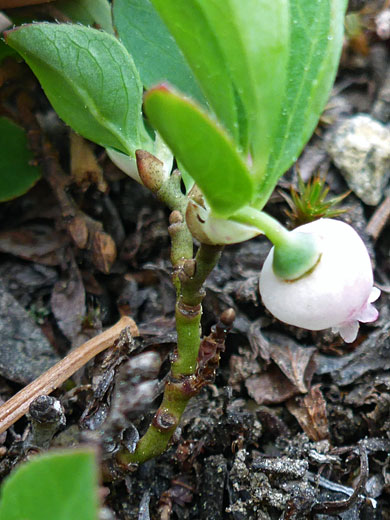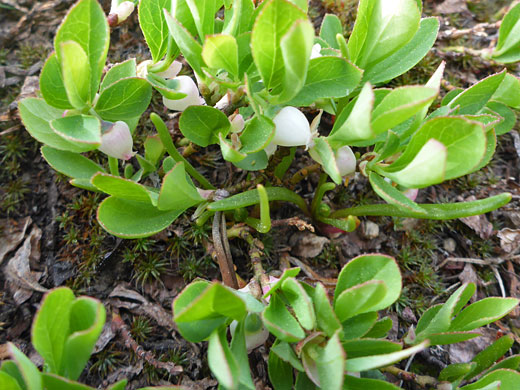Common name:
Bog bilberry
Family:
Scientific name:
Vaccinium uliginosum
Main flower color:
Range:
The Pacific states and the northern Rocky Mountain states
Height:
Up to 24 inches
Habitat:
Bogs, tundra, wet meadows, from near sea level to 11,000 feet
Leaves:
Deciduous, ovate to elliptic, light green, untoothed, hairless, up to 1 inch long
Season:
June to July
Vaccinium uliginosum is found in the Cascades, the Sierra Nevada, the northern Rocky Mountains, and coastal areas of the Pacific Northwest. Plants form extensive, low thickets, often prostrate, with short, woody twigs, generally brown, and hairless, relatively thick, light green leaves, sometimes purplish along the margins. Leaf tips are rounded rather than pointed. Veins are lighter in color.
Flowers are produced singly or in small groups (up to four) from the upper leaf nodes, though not at the tip. Pedicels are hairless. Flowers have a short calyx with five tiny lobes, and an urn-shaped corolla, white or pale pink; constricted at the top, and opening to five (less often four) small lobes. Fruits are blue berries, around a quarter of an inch in diameter.
Flowers are produced singly or in small groups (up to four) from the upper leaf nodes, though not at the tip. Pedicels are hairless. Flowers have a short calyx with five tiny lobes, and an urn-shaped corolla, white or pale pink; constricted at the top, and opening to five (less often four) small lobes. Fruits are blue berries, around a quarter of an inch in diameter.
All Contents © Copyright The American Southwest | Comments and Questions | Contribute | Site Map



